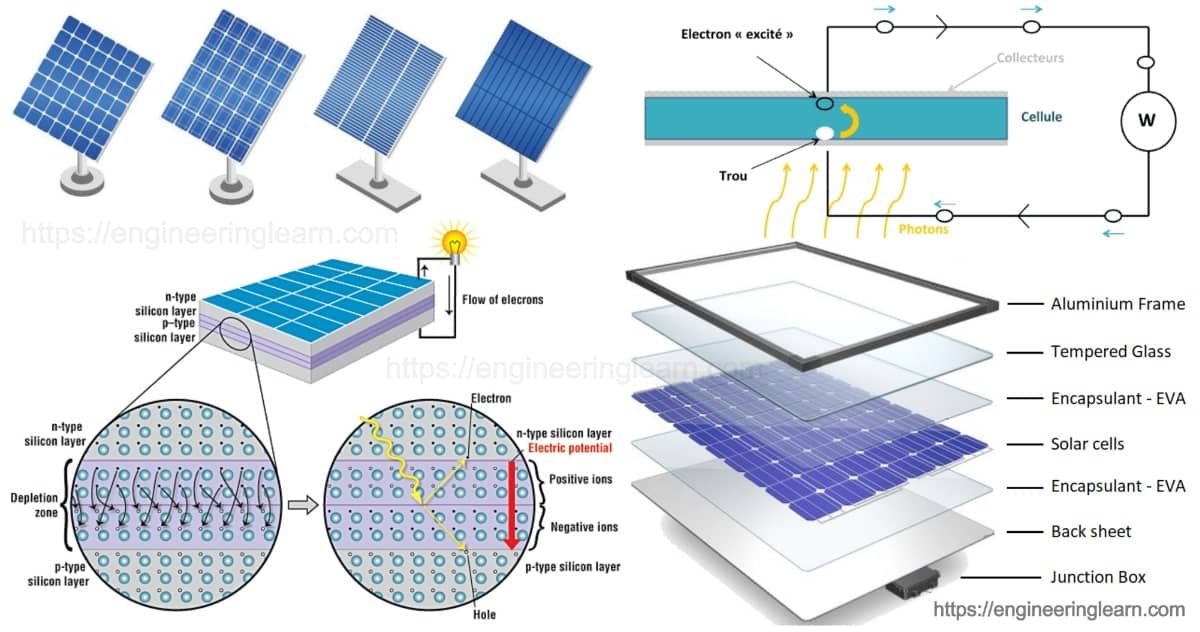About Solar Systems
Little Known Questions About Solar Systems.
Table of ContentsSolar Systems - TruthsMore About Solar SystemsLittle Known Questions About Solar Systems.Getting My Solar Systems To Work
There are three different kinds of solar panels: monocrystalline, polycrystalline, as well as slim movie. Monocrystalline photovoltaic panels are very reliable and also have a streamlined layout, but come at a higher price point than other photovoltaic panels. Polycrystalline photovoltaic panels are cheaper than monocrystalline panels, however, they are less efficient and aren't as visually pleasing.Nowadays, there are several varieties of monocrystalline solar panels on the market to select from., are becoming an increasingly preferred monocrystalline option.
Due to the fact that monocrystalline solar batteries are made of a single crystal of silicon, electrons are able to easily stream throughout the cell, raising overall performance. Not just do monocrystalline panels have the greatest efficiency rankings, they normally also have the highest possible power capability rankings. A lot of monocrystalline panels on the market today will certainly have a power output ranking of a minimum of 320 watts, but can rise to around 375 watts or higher!.
Due to the fact that polycrystalline cells include multiple silicon cells, the electrons can not move as conveniently and because of this, reduce the performance of the panel. The lower performance of polycrystalline panels also indicates they tend to have a reduced power output than monocrystalline panels, normally varying between 240 watts as well as 300 watts.
Indicators on Solar Systems You Need To Know
4% effectiveness With slim film cell models. In order to meet your energy requires, you would require to mount even more slim movie panels over a large area to produce the exact same quantity of power as crystalline silicon solar panels. This is why thin film solar panels don't really make good sense for domestic setups where area is restricted.
The temperature coefficient tells you exactly how a lot the power outcome will certainly reduce by for every 1 * C over 25 * C the panel obtains. The basic temperature coefficient for mono and polycrystalline panels generally falls somewhere in between -0.
With some slim film panels, it's tough to even see the private cells within the panel. They additionally tend to have much less electrical wiring and busbars, meaning there's much less white space. Due to the fact that they are so ineffective, you would require to cover your entire roofing in thin movie panels - which may or might not be your design.

Some makers have actually functioned around this with black packaging or shaping the cells in a different way, but these visual adjustments can affect both the cost and efficiency of the panels. On the whole, monocrystalline panels still look smooth, however they're a little bit much more noticable than thin film panels. solar systems. The procedure in which polycrystalline solar cells are produced triggers the cells to have a blue, marbled look.
The Best Strategy To Use For Solar Systems
If you get on a tight spending plan, polycrystalline panels may make even more sense for you. We do not advise thin movie solar panels for household setups - their performance as well as sturdiness do not make the affordable worth it, and it's not likely you'll have nearly sufficient room to install the variety of slim film panels you would certainly require to cover your home power usage.
Given that they are made from pure silicon, they can be readily recognized by their dark black shade. The use of pure silicon additionally makes monocrystalline panels the most space-efficient and longest-lasting amongst all 3 solar panel types. This comes at a cost a whole lot of silicon is squandered to produce useful source one monocrystalline cell, often getting to over 50%. solar systems.

Amorphous silicon panels (A-Si) acquire their name from their shapeless nature. Unlike mono-and polycrystalline solar cells, the silicon is not structured on the molecular degree. On standard, an a-Si cell requires only a fraction of the silicon needed to generate regular silicon cells. This permits them to have the most affordable production expense, at the cost of effectiveness.
The Definitive Guide to Solar Systems
$0. 32-$0. 65 $1 $1. 50 $0. 70 $1 $0. 60 $0. 70 $0. 50 $0. 60 $0. 43 $0. 50 Note that these numbers do not include the price of installation as well as labor. With labor and various other above elements, the total can increase to $2. 50 to $3. 50 per watt.

This implies that thin-film panels can be a good option for hotter atmospheres or places that experience even more sunshine throughout the year. The updated International Building regulations of 2012 requires solar panels to match the fire rating of the roofing where they are mounted. This is to make certain that the components do not accelerate the spread of flames in the occasion of a fire.